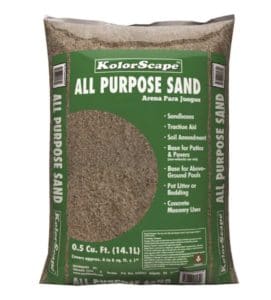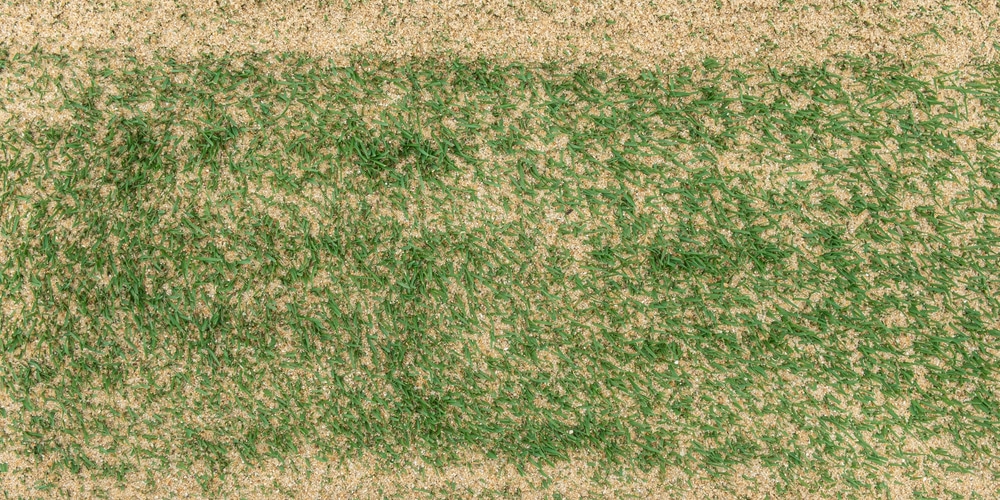Sand is usually the recommended material when it comes to filling up low spots or divots in your yard. However, which type of sand should you use to level your lawn? Should you buy play sand for leveling lawn?
Let’s discuss the best sand to use for lawn leveling and how to level a lawn properly.
Is Play Sand Good for Leveling a Lawn?
Play sand is one of the best leveling materials you can use on your lawn. Commercially speaking, it’s one of the finest sands you can buy because the sand type undergoes a rigorous screening and sifting process that eliminates rocks, pebbles, and similar debris.
Play sand is recommended for leveling out small to medium-sized patches or divots in your yard. For larger applications, you may need to use mason sand, otherwise known as brick sand or mortar sand. It’s construction-type sand that has small grains, which is perfect for getting in and filling up the ground without significantly affecting the turf canopy.
The best thing about play sand for leveling lawn is that it’s widely available. You can buy it in any home improvement store or home center at a decent price. You should be able to fill in bumpy and uneven spots in your yard using play sand that’s mixed with compost and garden mix or topsoil.
What is the Best Sand for Leveling Lawns?
As far as filling up yard holes and making the ground even is concerned, play sand and mason sand are at the top of the list. Both have fine grain and processed qualities, which make them great mediums to use on uneven ground.
Mason sand is a bit coarser than play sand but has small grains that fill up space nicely. It’s the preferred material if you’re looking to fill a larger area, e.g., your entire yard or laying turf. Meanwhile, play sand is finer as it undergoes a refining process.
The soft and dusty texture makes it easier to work into the soil. However, you’ll want to add a bit over time to prevent choking the grass roots and canopy.
River sand and silver sand are typically reserved for top dressing and composting lawns.
How to Level Lawn with Sand
Before you start, you should know that leveling a lawn shouldn’t be done in a single day as too much can choke the existing grass on the ground. You should only add half-inch increments at a time, and until you’re satisfied with the results.
For deeply sunken areas it’s recommended that you fill them up with soil mix, then start new grass seed. Laying out play sand will be too much work, and the grass will likely die from too much stress.
For small sunken areas with healthy grass, you can employ a method called ‘sweeping under the carpet’, which essentially means you remove the top grass, then fill the ground with topsoil or a potting mix. It’s worth noting that you should use soil and compost to make the ground level to the rest of the landscape, then water lightly now and then to remove air pockets and prevent them from settling in the future.
Step 1. Make a Leveling Mix
To level a lawn with sand, you should mix 20% compost, 40% garden mix, and 40% play sand or mason sand in a tub or wheelbarrow. Use a small shovel or trough to mix the materials together and achieve a blended consistency.
Step 2. Apply the Mix on Uneven Lawn Areas
Add a half-inch of the leveling mix on areas that have sunk. Check the entire lawn for these spots and apply as needed.
Step 3. Rake and Brush
Use a small rake to spread out the mixture evenly along the ground, then a push broom to make it settle while pushing existing grass up on the surface. This gives your grass a greater chance to survive.
Step 4. Water Lightly
Once you’re satisfied with the leveling, use a garden hose or watering can and lightly moisten the ground. Avoid overwatering as it can wash away the sand.
Step 5. Repeat as Needed
After a few days, observe the lawn and see if it needs another half inch. Repeat the process until you’re happy with the results.
Related Article: How to Grow Grass in Sandy Soil


